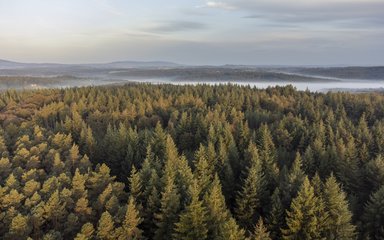Since 1925, Wyre Forest has evolved from a pioneering conifer collection to a world-leading centre for conservation. As we mark our centenary, we invite you to join us in celebrating this incredible remarkable journey. Together, we’ll explore our rich history, celebrate our achievements, and look forward to the future of preserving our unique and globally significant collection of trees for generations to come.
Browse through our exciting events and find out how we’ve shaped the forest over the years, as well as the pivotal moments that have defined our legacy.

Where it all began
In September 1919, the Forestry Commission was founded following the First World War to restore the nation’s woods and forests and produce a reliable, home-grown timber reserve. The Forestry Commission bought parts of Wyre Forest in 1925 and slowly cleared the oak woodland to replace with new conifers, leading to decreased biodiversity but increased timber production.
In 1964, the last train ran through the Forest - a branch of the Severn Valley Railway - and the line was closed, signalling an end to Wyre’s long industrial history. The trackbed of the railway is now a cycling route through the forest.
Following the Forestry Act of 1967, the Forestry Commission was allowed to encourage recreational use of the forest estate by increasing public access and building visitor centres, car parks and forest walks. Wyre Forest Visitor Centre was built in 1976, and refurbished 1996.


